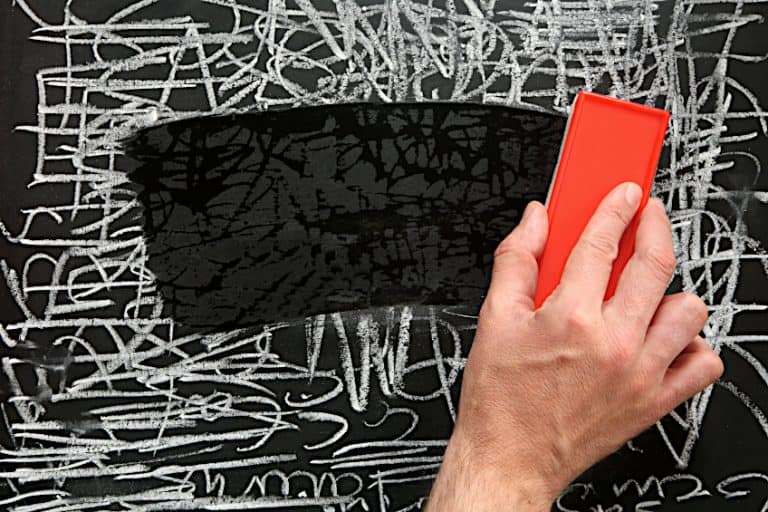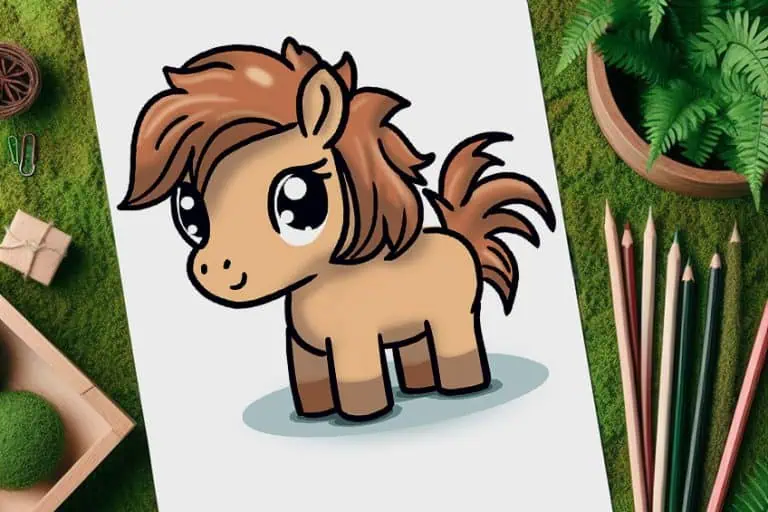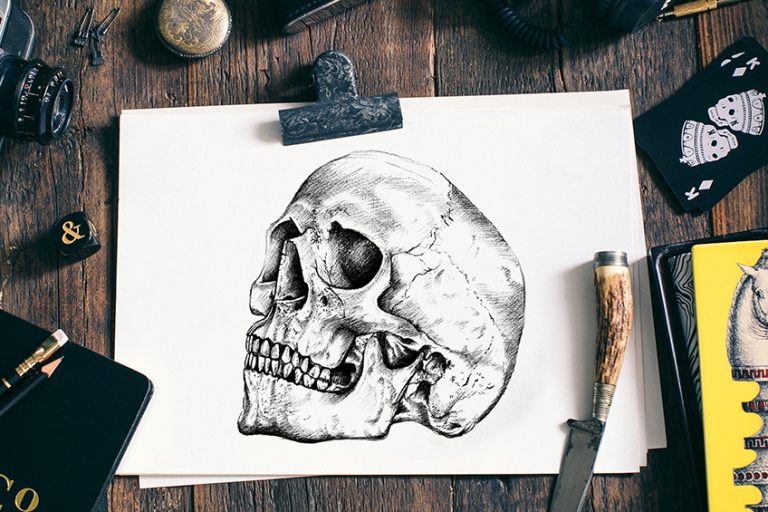Octopus Drawing – An Easy Guide to Drawing a Realistic Octopus
This post may contain affiliate links. We may earn a small commission from purchases made through them, at no additional cost to you.
Octopuses are fascinating animals with a very unique set of features. Their alien-like aesthetic serves as a beautiful drawing exercise to enhance our line work and understanding of color and shading. Octopuses also belong to a varied range of species, making the animal a rich visual source of inspiration. Their beautiful aesthetic also makes them a great addition to many artworks, whether it is an addition to a surrealist artwork or a simple seascape. Learning how to draw an octopus also comes with a good set of learning curves, from layering colors to adding final details for texture, shape, and structure. There is a lot to be gained from an octopus drawing as it is not just a drawing challenge, but rather a beautiful addition to your drawing repertoire!
Table of Contents
- 1 Step-by-Step Guide on How to Draw an Octopus
- 1.1 Step 1: Shaping the Octopus
- 1.2 Step 2: Refining the Octopus Sketch
- 1.3 Step 3: Adding Light Colors to the Octopus Drawing
- 1.4 Step 4: Adding Mid-Tones of Colors into the Octopus Drawing
- 1.5 Step 5: Adding Darker Colors into the Octopus Drawing
- 1.6 Step 6: Refining the Details of the Octopus Drawing
- 1.7 Step 7: Focusing on Unique Details in the Octopus Drawing
- 2 Tips and Tricks to Remember
- 3 Frequently Asked Questions
Step-by-Step Guide on How to Draw an Octopus
The process of drawing an octopus is quite simple, where we start with a basic sketch of the octopus’s shape. There are various species of octopus to choose from, however, we will be learning how to draw the common octopus. As we develop the octopus sketch, we will then refine the sketch with linework and proceed to integrate color into the octopus drawing. This is where we work with lighter tonal values, defining the different shapes and color values in different features of the octopus. As we continue, we will then build them up until we achieve a more realistic octopus drawing. As we come to the end, we will then work with linework and shading to emphasize the features as a last touch in our octopus drawing.
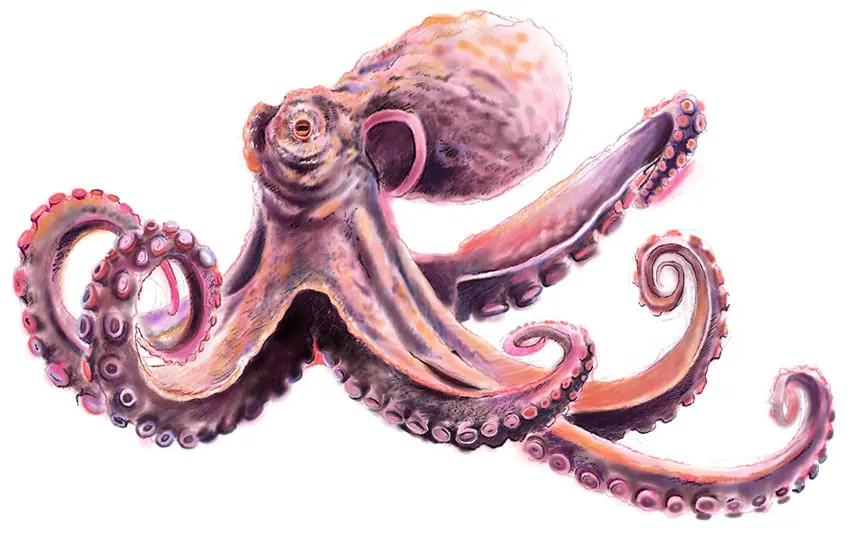
Step 1: Shaping the Octopus
We can start quite simply by forming the octopus in its basic shapes, where we establish the shape of the head and the arms.

The arms of the octopus get narrower as they shift towards the tips of the arms. They are also quite flexible, allowing them to move and twist in various directions. We can represent this quality by giving the arms a spiral shape.
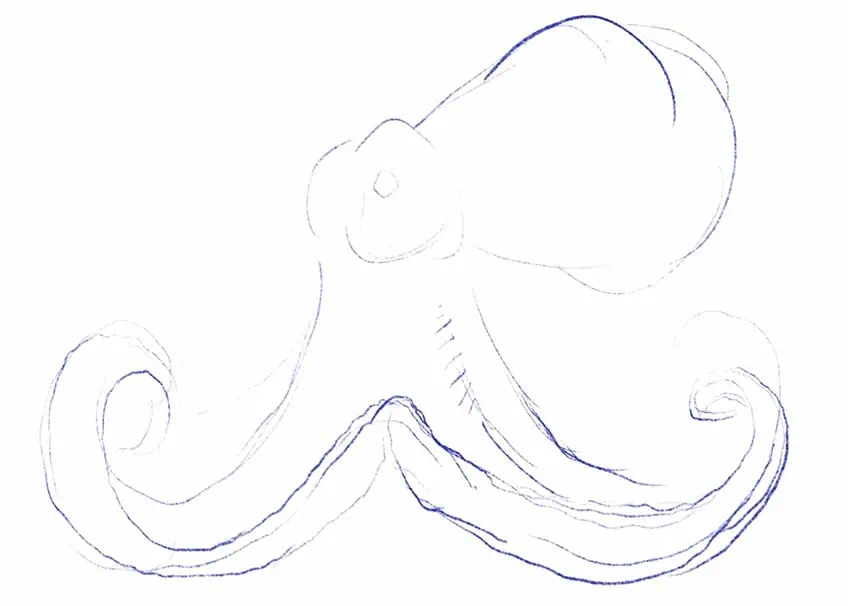
We want to make sure to shape the octopus in simple shapes at first, in doing so we define the scale and proportions of the different features.
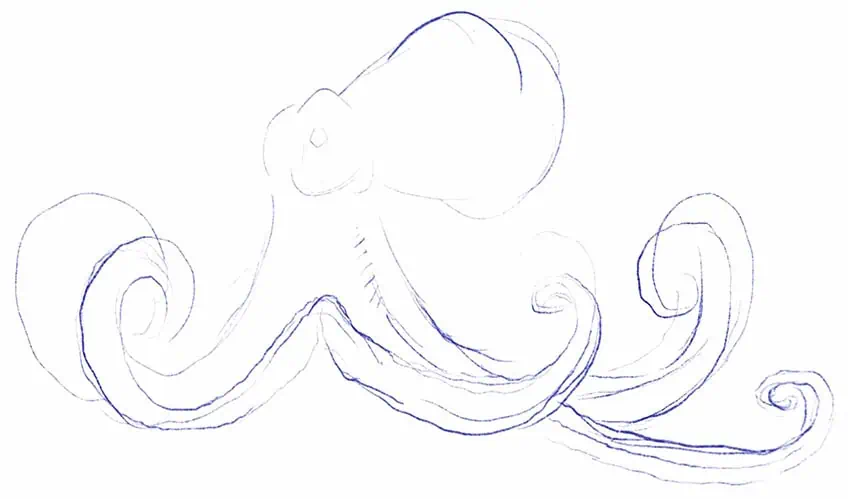
The head of the octopus connects to a larger bulbous-shaped mantle, with the eyes being situated on the side of the head. The eyes are also small in scale compared to that of the surrounding features.

As we form the different arms, we want to make sure that we define the structure of the arms as these cylindrical shapes. The arms are quite tube-like rather than flat, we want to make sure we represent this quality in the arms.
Step 2: Refining the Octopus Sketch
As we proceed, we can now refine the structure of the various features with lighter pink hues. In doing so, we are defining the shape of the octopus with the lighter tonal values. This is where we can also start to integrate the more unique details, such as the suckers that flow along each arm of the octopus.
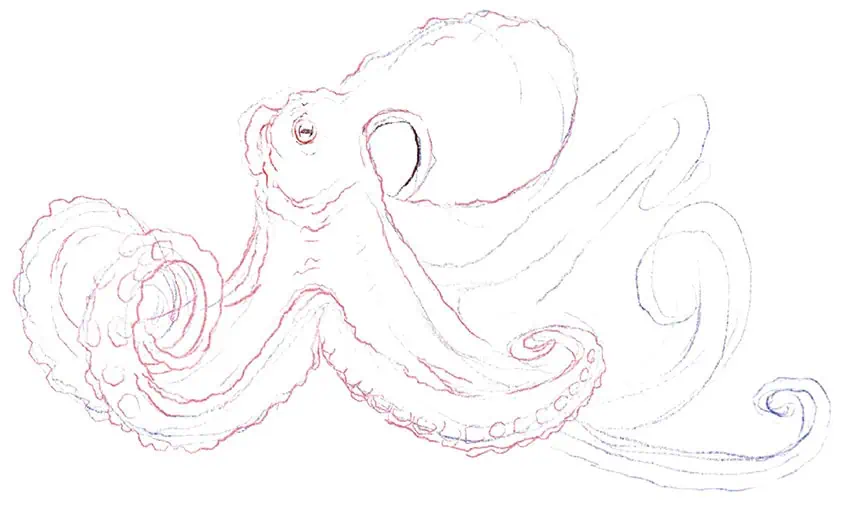
As we proceed, we can integrate a light pink color throughout the entire octopus sketch. As we do this, we can work within the outline of the octopus sketch, establishing the light pink throughout the entire octopus drawing.

Step 3: Adding Light Colors to the Octopus Drawing
As you start building up your color values, we can start working with slightly darker tonal values. The intention is to start working strategically with darker red hues to define the form of the octopus.

This is where we integrate darker tonal values into the octopus drawing to define the three-dimensionality of the animal. In doing so, we start to represent the darker areas of the octopus.

An octopus has a unique set of features that can be defined through the integration of darker tonal values. This is where we start to define the suckers, the three-dimensional qualities of the eye, and the texture of the surface area of the octopus.

Step 4: Adding Mid-Tones of Colors into the Octopus Drawing
We can keep our details quite soft for now, as we shape the different areas of the octopus. As we slowly build up our color values, we want to use them to slowly shape the octopus’s various features. Another way in which we can use darker tonal values is to slowly define the texture of the skin. We can do this by having smaller scattered marks that move along the surface area of the octopus.

Step 5: Adding Darker Colors into the Octopus Drawing
As we continue, we can start exploring darker colors that work well with layering into the octopus drawing. Colors like purples and blues work well to represent a transition of color values within the octopus.

The idea is to emphasize the highlights and shadowed areas, creating a distinction in these eras as we layer color into the outline; one of the octopus drawings.

Step 6: Refining the Details of the Octopus Drawing
As we proceed, we can start to work more strategically with linework and shading over the softer marks. Now that we have this base of color, we can work our way from the head, and slowly work our way through the entire octopus drawing.

This is where we start to use the lighter and darker tonal values as an indication of where to add detailed linework and shading to emphasize these areas of the octopus.

As we work with adding details, linework can be used quite effectively to define the rough texture along the surface area of the octopus. The idea is to have little scribble-like linework over the light and darker tonal values established throughout the octopus drawing.

We want to have a loose scribble-like motion when adding marks into the octopus drawing that defines texture in the skin.

The eye of the octopus is covered with muscular skin, which creates a slit-like shape in the eye. The eye is also a distinct feature and can be a different color.

The suckers that form along the arms are also quite specific in shape. They can be described as these cup-like structures, with a dish-like shape within the center of each. We want to work with linework to emphasize the form and outline of these unique structures. As we use linework and shading, we want to make sure our colors stay consistent within the highlighted and shadowed areas of the octopus.

Step 7: Focusing on Unique Details in the Octopus Drawing
As we proceed, we want to focus on the unique features such as the suckers, where we make sure we spend time on defining their cylindrical form through layers of color and then linework and shading.

We want to take our time with the arms, making sure that the suckers also become smaller as they shift to the narrower sections in each arm.

Again, the surface area of an octopus is also quite abstract, which means we can have these scattered moments of linework and shading to represent this quality in the skin. We can also define the actual separation between the arms with darker colors that flow between them. The shadows between the arms can be enhanced with some layers of shading to emphasize the separation.

Again, the suckers are a unique feature, and we want to make sure that we spend time defining each of them within each arm. We want to build up the colors with layers, and then proceed to enhance the shape with linework and shading.

As you build up these tonal values by darkening the details, we start to see how the various layers work together to create texture, shadow, and three-dimensionality in the octopus drawing.

We want to work through the suckers on the arms, making sure we represent the dish shape inside of each sucker with a circular shape in the canter.

Others, from here we can work through the entire octopus drawing, slowly enhancing all the different features with linework and shading to emphasize the form and structure of each feature.

Tips and Tricks to Remember
- Work on their basic shape. Make sure you capture the basic proportions before refining the features.
- Refine the shape of the features. Once you have the basic shape of the main features, you can define the shape of the simple octopus drawing.
- Add in layers of color. You always want to work with building up your layers of color from lighter tonal values to darker tonal values.
- Take your time with details. Lastly, be patient with refining the octopus with line work and shading.
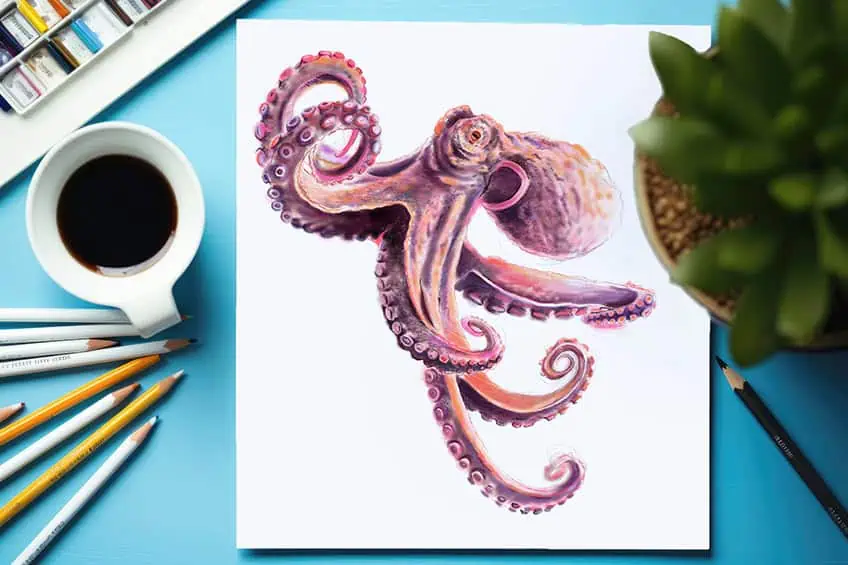
Learning how to draw an octopus is a great exercise because the subject allows us to build our understanding of line work, color, and shading. In doing so, we see how to strategically build up a unique specimen through the integration of all these drawing processes, resulting in a realistic octopus drawing.
Frequently Asked Questions
How to Draw the Tentacles of an Octopus?
Octopuses have eight appendages that connect to their body, all of which have rows of suction-cup-like structures along their surface areas. The octopus can be described more as an eight-armed animal rather than the appendages being identified as tentacles. We represent these eight arms with a broad width as it connects to the wider body structure, and slightly more narrow as they flow towards the tips of each arm. The head of the octopus or mantle is quite large in comparison to the arms, however, the arms are much longer. We also draw the suction-cup features, or suckers, as these little cup-like shapes. We want to think of them as cylindrical features that are quite small and rounded, which get smaller as the arms get narrower.
How to Draw the Head of an Octopus?
The head of the octopus is a unique feature because it is so large and encapsulates a lot of what makes the octopus a living organism. Visually, the head is quite rounded and large compared to the more narrow arms that are slightly longer. The head is broken up into two main parts, which are the larger ball-like structure, known as the mantle, and the area where the eye is situated, known as the head. The eye of the octopus has an iris and is like a camera feature that is surrounded by a muscular structure that folds around the eye. This gives the eye a slit-like appearance. The texture of the head can be described to be like rock or rough in its appearance. Mainly, we want to make sure that the head’s width is generally larger in comparison to the arms within an octopus drawing.
Matthew Matthysen is a multidisciplinary artist. He completed his fine art degree, majoring in History of Art and Contemporary Drawing Practice at the University of Witwatersrand, South Africa. Before joining acrylgiessen In 2020, Matthew worked part-time as an art teacher at Reddford Blue Hills High school. Matthew creates drawing and painting tutorials for acrylgiessen and captures them not only photographically and in written form. He also records the creation of his works in his own creative studio as in video format, from which later with a voiceover and a video editor also drawing tutorials for the Youtube channel of acrylgiessen are created.
Learn more about Matthew Matthysen and about acrylgiessen.



